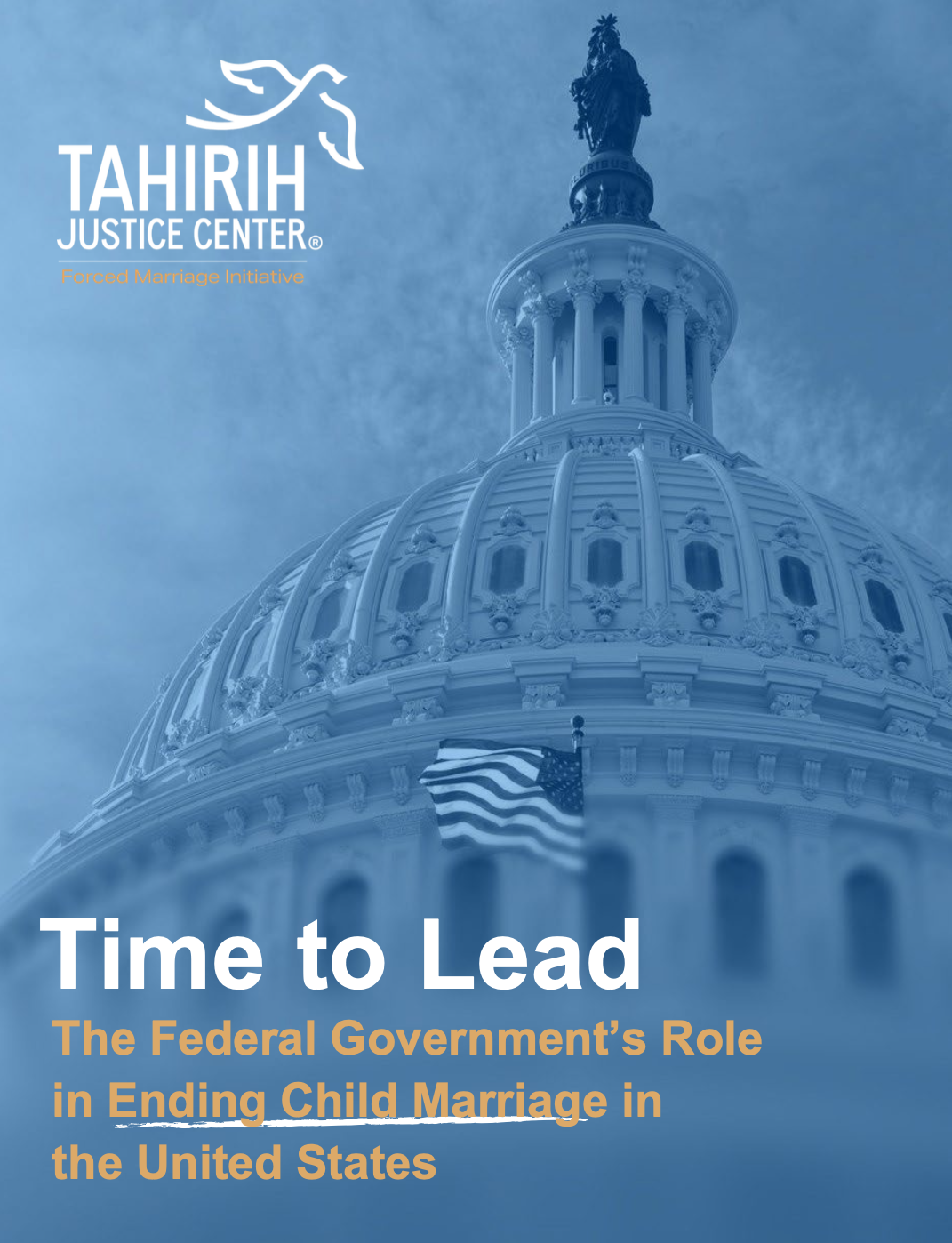 Child marriage continues to be a serious problem in the United States, affecting thousands of children’s health, safety and well-being each year. Among other concerns, child marriages are often forced marriages. Through our specialized Forced Marriage Initiative (FMI), Tahirih is leading efforts at the federal and state levels in the United States to address forced and child marriage as a domestic problem that affects both U.S. citizen and immigrant women and girls.
Child marriage continues to be a serious problem in the United States, affecting thousands of children’s health, safety and well-being each year. Among other concerns, child marriages are often forced marriages. Through our specialized Forced Marriage Initiative (FMI), Tahirih is leading efforts at the federal and state levels in the United States to address forced and child marriage as a domestic problem that affects both U.S. citizen and immigrant women and girls.
In Time to Lead: The Federal Government’s Role in Ending Child Marriage in the United States, Tahirih highlights the critical role of the federal government in our fight to end child marriage here at home. It specifically calls out the glaring gap in our immigration laws that set no minimum age for a foreign beneficiary to a spouse or fiancée visa. These lax laws have allowed shocking cases to proceed, including those in which U.S. men in their 40s and 50s successfully petitioned for girls as young as 14 years old.
In all, more than 8,500 marriage-based visa petitions involving at least one minor have been approved by USCIS. Most of these petitions (more than 5,500) involved adult U.S. citizens who sought to bring minors to the United States from abroad as fiancées or spouses. Girls were the younger party in 95% of the approved petitions which closely mirrors the disproportionate gendered impact of child marriage that we see in our state-based data.
“The United States is a host of contradictions when it comes to protecting children from the lifelong harms of child marriage. Despite our vocal support of human rights around the globe, our current state laws and federal immigration laws both sanction and facilitate child marriages happening in our own backyard. This must change,” said Casey Carter Swegman, Director of Public Policy at the Tahirih Justice Center.“Child marriage on U.S. soil is no less harmful than child marriage occurring elsewhere, and we must treat this issue with the same urgency here as we do when it happens abroad. Our children deserve better.”
This report outlines concrete, straightforward steps that the federal government can take to address child marriage through the immigration system and incentivize states to strengthen their marriage age laws.
Tahirih’s recommendations to end child marriage in the United States:
- Mandate that the U.S. Department of Justice issue model statutory guidance for setting 18 (or the age of majority, if that is higher) as the minimum marriage age without exceptions.
- Incentivize states to take action through newly authorized funds that would increase certain grant awards to states that enact legislative reforms to protect children from forced and child marriage.
- Prohibit the issuing of marriage licenses if a marriage involving a minor will take place on federal land.
- Update U.S. immigration law to set legal standards based on age of petition and age at time of marriage.
We look to the U.S. federal government to finally take the first steps toward ending legally sanctioned child marriage in the United States and show true leadership in the global movement to end child marriage.


